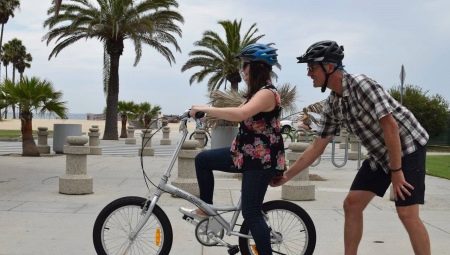There is an opinion that you need to learn to ride a bike from early childhood. This is fundamentally wrong. You can master this 2-wheel technique at almost any age. This article is devoted to how to learn to ride a bicycle for an adult.
Learning Features
Independently learn to ride a bicycle to an adult prevents, first of all, the psychological aspect. Most beginners think about how they will look in the eyes of others. But instructors in special bike schools will help overcome this psychological barrier.
Some are just scared to ride a bike and even more so ride. But you need to believe that the bike is safe and stable, especially at speed. You only need to help him keep his balance


An adult novice cyclist even has advantages over children - more developed muscles and a better sense of balance. This will certainly help in mastering a new technique for you. And remember that with a strong desire to learn how to ride, you can even in one day. The main thing is to be patient and allocate time for this.
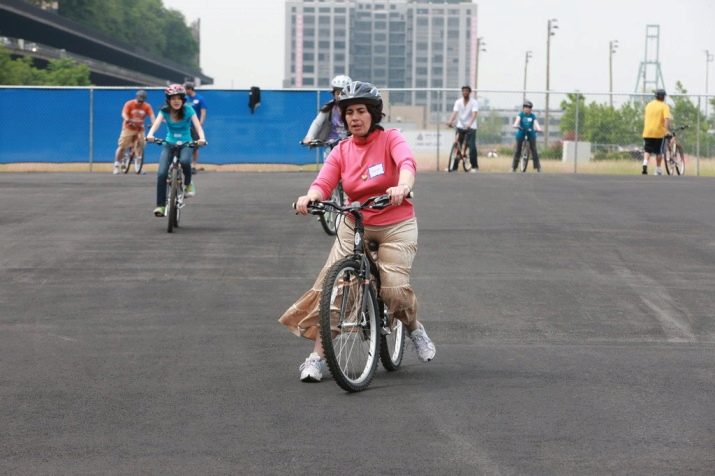
Equipment
In order to start classes, you need to get the right equipment. And then nothing will prevent you from cycling. Pick up the shoes - not necessarily bicycle, but it should be closed and on a hard sole. Clothing should not be too spacious. Long sleeves and wide legs can catch on the steering wheel and pedals. Use gloves - they will protect your hands from corns and will help in the event of a fall.
Necessarily need a helmet. Even experienced cyclists use it, there is a risk of flying over the steering wheel with a sharp deceleration.For a beginner, you can buy a closed helmet that protects the ears and chin. Elbow and knee pads will also not be superfluous.
Think about glasses. They will protect your eyes from dust and flying midges. Just choose a high-quality model, so that in case of a possible fall, fragments do not get into your eyes.

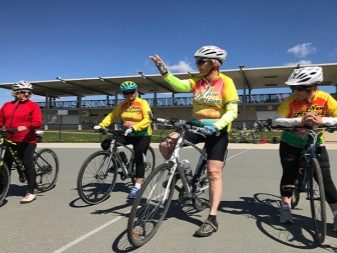
Selection and preparation of the bike
Bicycles are single-speed (such as road) and multi-speed (with switches).
For driving instruction, an open-frame model is desirable - it is easier to jump from it, if that.
Both girls and men use open-frame bikes. Closed-frame structures are generally lighter, and the top tube can pass low and not cause inconvenience.
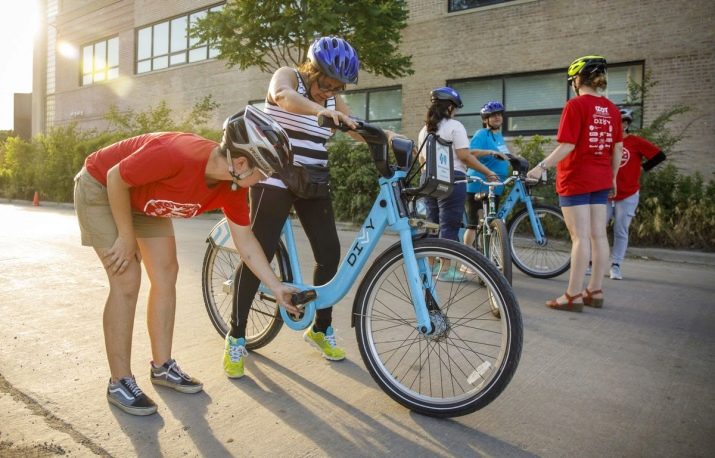
Think about which bike is right for you.
- Single speed. They tolerate falls better, models with an open frame are more common. Damaging such a bike is more difficult. But they are equipped with a foot rear brake, which can slow down the learning process. In addition, the chain sometimes drops from them, and the cyclist runs the risk of being left without a brake. If you choose such a bike, make sure it is equipped with a front hand brake.
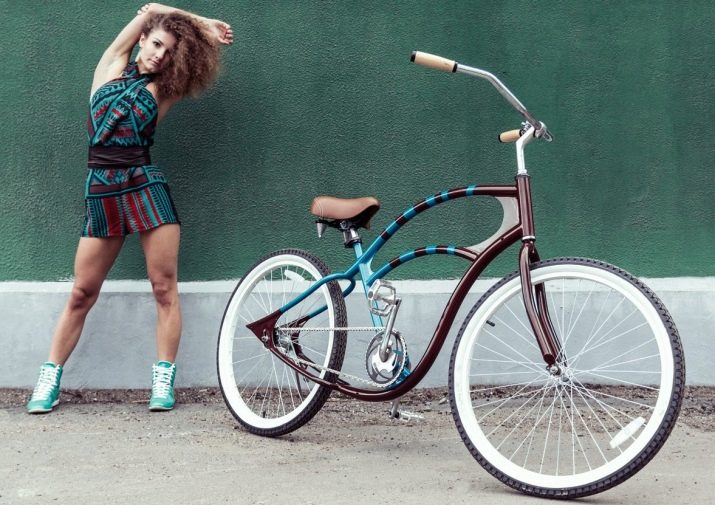
- Multi speed. It is likely that you will ride such a bike in the future, so it is preferable to study on it. They are also equipped with hand brakes, which will facilitate training. It is better to set the average speed and no longer touch the switches - they will be needed later. If you choose this type of bike, it is advisable to install a rear derailleur protection.
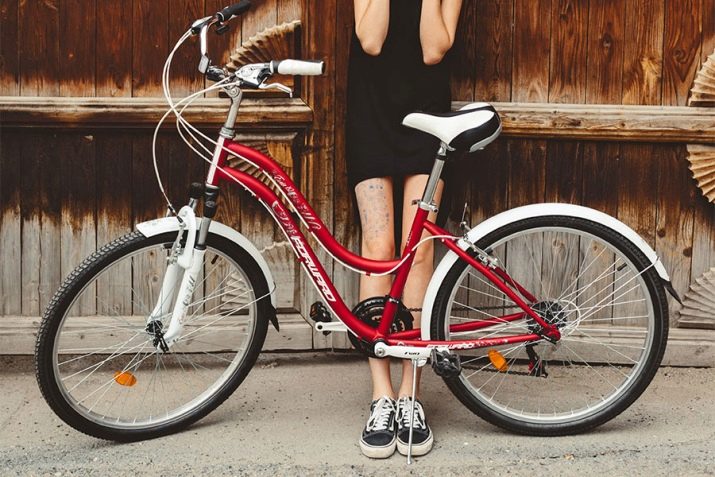
For training, bicycles with a planetary rear hub are suitable. They are equipped with several speeds, and damaging this type of switch is more difficult than usual. The speed is better to set the average.
Preparing any bike for training is easy.
Check the brakes, inflate the tires, adjust the steering wheel for height and angle. And lower the seat so that while sitting on the bike, you can easily get your feet to the ground. It is advisable to choose wide tires, this will increase stability.
Just do not take road, BMX, downhill or similar bikes. From scratch, it’s difficult to start riding them, and their cost is quite high.
Superfluous elements such as a bicycle computer, mirrors or a lamp are better to remove. They will only distract your attention. In addition, they may be damaged if dropped.

Mastering two-wheeled transport
You can start cycling both in childhood and at age 18. And even at 70, it’s not too late to study. The tips below will help you get started quickly on two-wheeled vehicles and destroy stupid prejudices.
- Step 1. Think about the benefits a bike offers you. You can even write them down on paper to more clearly recognize all the virtues. You can quickly travel around the city, do not depend on traffic jams, keep yourself in shape, improve your health, have a good time. For women, such walks can sometimes replace fitness.

- Step 2 Decide if you need an instructor. You can go to a bicycle school or ask you to teach a friend how to ride. Only the teacher should not be a scorcher or a beginner. The former does not have enough patience, and the latter does not have experience. If there is an instructor - just trust him. But you can learn to ride a bike yourself, and many prefer this way.
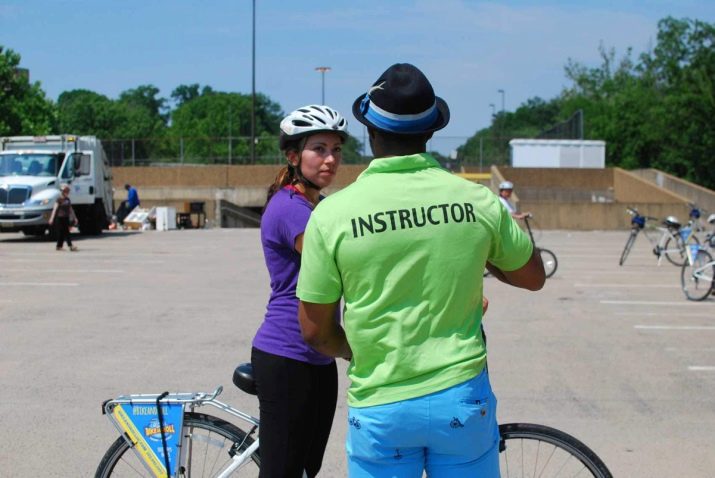
- Step 3 Decide on a place for training. It should not have cars or other obstacles. It is also desirable that the site was large, since it will be necessary to train to unfold. Asphalt under wheels or compacted earth - does not matter much. The main thing is that the surface should not be slippery or dusty. On loose soil should not be trained.
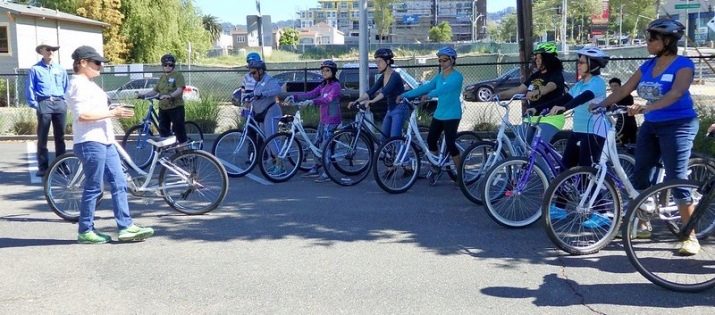
- Step 4 Try holding the bike by the seat and not touching the handlebar to drive it directly. This will allow you to better control the behavior of the bike in the future. Remember, the management of bicycles and motorbikes occurs mainly on a slope, this is due to physics. The steering angle is small even at sharp turns.
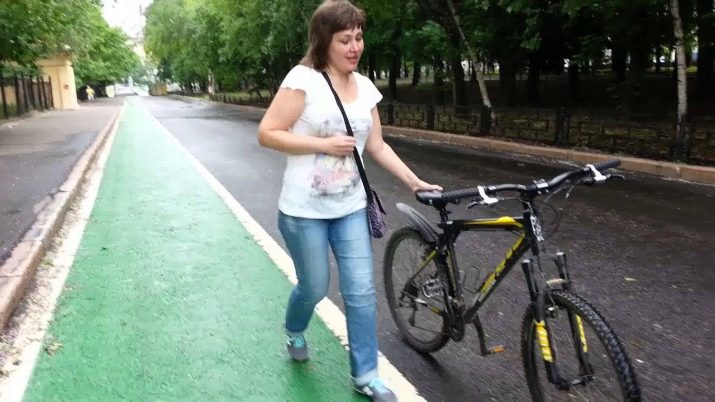
- Step 5 Sit on the bike using the hand brake if necessary. Now try, being in the seat, push off from the ground with your feet, like on a children's scooter. Do this alternately with each foot, and then with two legs at the same time. It is not necessary to look at the front wheel or obstacles, but at the place where you plan to be. At this stage, a road with a slight slope is well suited. The main thing - do not accelerate too much and balance your whole body. But it’s also not worth driving very slowly: the higher the speed, the higher the stability.

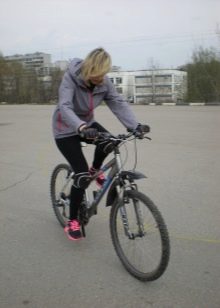
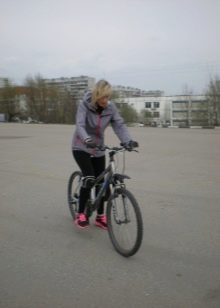
- Step 6. When you have mastered this mode of movement, start using the pedals. To do this, move one of the pedals, often the right one, to the 14 o'clock position and just press it. Do not be afraid of sudden acceleration, just try to keep balance. So both legs should be worked out.
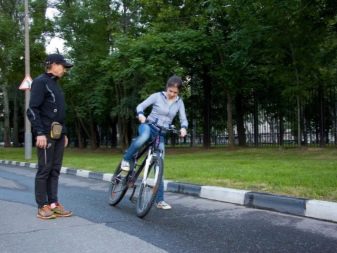
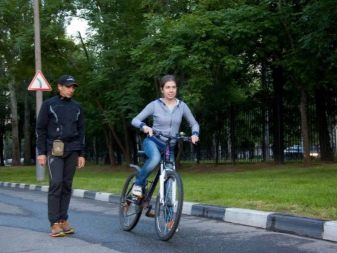
- Step 7 After you learn how to use the pedals, try to outline your goal and get to it. You do not have to strain your arms much, you just need to keep the direction of the steering wheel. When you get there, congratulate yourself, the training is almost done.
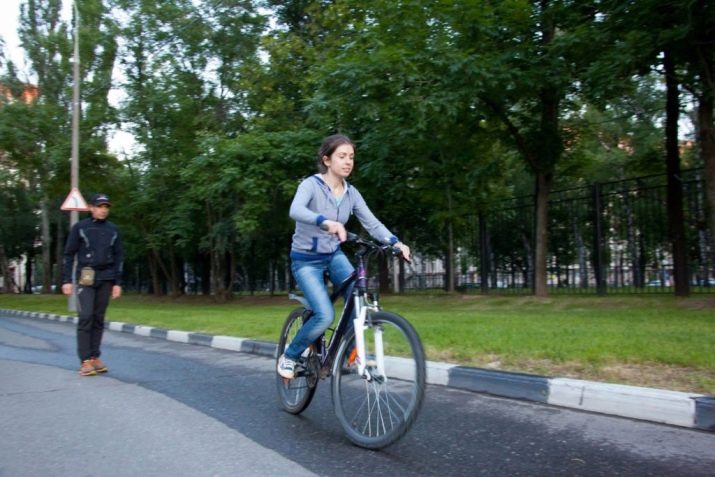
- Step 8 Learn to enter the turns. To do this, slightly tilt the steering wheel in the desired direction and tilt the housing slightly in the same direction. Do not be afraid, the movements should be smooth. If it doesn’t work, don’t wag, but stop and try again. When you learn, make a U-turn with a large radius and gradually reduce it. This is the most difficult, but you are almost there.
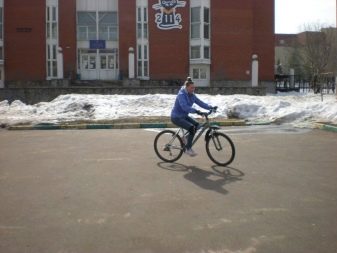

- Step 9 Congratulate yourself. You learned to ride a bike! Remember this moment, probably one of the happiest.

Now you need to adjust the seat height, learn how to use the switches. You can install additional equipment - a computer, mirrors and the rest.
The main thing - do not forget to practice. To hone new skills, ride as often as possible.
This is especially necessary at first, when the reflex to balance on a 2-wheeled transport has not yet developed.
Now you can safely ride on public roads. Only highly recommended to know traffic rules. Start on less busy roads and always drive only on the right side. You need to overcome the fear of cars and not be nervous when the car overtakes you, even if there is a small distance between you. Be calm about any traffic situation and don't lose your balance.
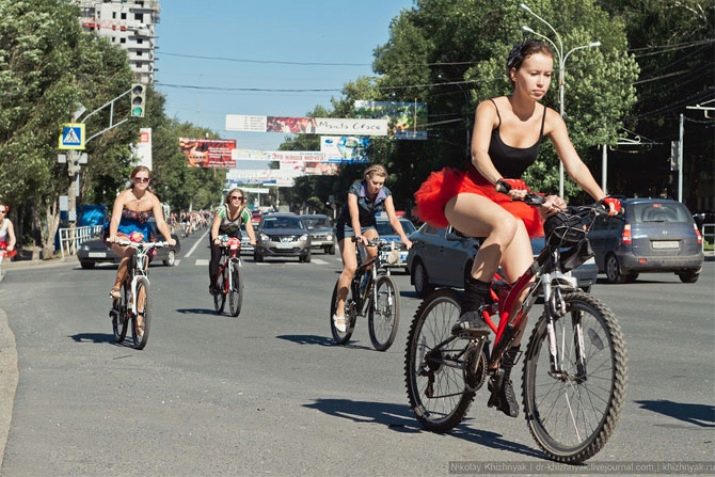
Now you can set new goals. Try to drive a snake through the objects laid out on the asphalt, turn around with the smallest radius, stop at a given place. Now you can do anything, you have overcome your fear and stupid prejudices. Then learn to ride without hands, raise the front wheel and the rest. These skills can come in handy even for everyday use.
You can watch the cycling vocational training lesson in the next video.
